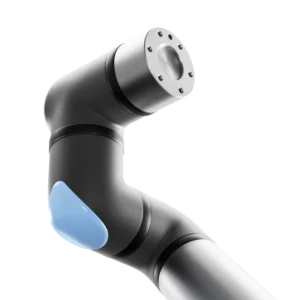Is a Collaborative Robot Right for You?
Reasons for Collaborative Robots
First, collaborative robots are what the name implies. They are a robot that is capable of operating around people without the need of external guarding or safety devices (pending a risk assessment of the total application). This has been a gateway to new industries for robotics. Without the need for a large safety enclosure, robots can now be used in places that just wouldn’t have been feasible in the past.
You can find examples everywhere. They are being used in restaurants, airplanes, and even as robotic bartenders. Some may think it’s a gimmick, but there is no doubt that these robots are effective, reliable, and their impact on other industries will continue to grow. But in these new industries such as food etc, companies typically do not have robotics engineers on staff to handle the robot.
Second, collaborative robots are typically much easier to program than traditional industrial robots. Companies no longer need a staff of robotics engineers to program simple applications. The Universal Robot has a very user-friendly, easy to use interface that can make writing programs, modifying waypoints, and communicating over digital I/O very easy. And with the UR Capps system, companies like Robotiq have been able to offer a wide suite of capabilities with the same easy to use paradigm. The complex world of robotics has gotten much simpler with the introduction of collaborative robots and the surrounding technologies.
With a little background on what separates a collaborative robot from a traditional robot, now it is time to decide if a collaborative robot could be a good fit for your industry. To help you make this decision let’s start with asking three basic questions:
Is The Task Repetitive?
This is first on the list because it is possibly the most important question for a quick installation. Robots, whether collaborative or traditional, are programmed to carry out a task over and over again. While there are some methods to allow robots to have flexibility, the simplest and easiest of installations require the robot to carry out the same task over and over.
An example of this could be placing hamburger patties onto a grill and flipping them at a predetermined amount of time before removing them from the grill and placing into another location. This task, if performed by an employee, could involve someone standing in front of the grill and handling this process over and over until their shift is complete.
These type of repetitive tasks lend themselves very well to collaborative robot technology. The examples are endless and are not limited to just the food industry. Wherever a task is performed the same way over and over, there is the potential for robotic automation.
What Are The Task Operating Hours?
This is a very important question to ask yourself. As a Robotics Specialist, this is always one of the first questions that I ask. When it comes to considering robotics, one must consider not only the feasibility of the application but also the return on investment (ROI) to determine if the application makes sense from a business perspective. Oftentimes this component gets overlooked until many hours have been spent on the engineering side.
ROI is variable and has to take not only the application into account but the hours of operation and the burden rate of an employee (pay rate, insurance, disability, social security, etc). With minimum wage on the rise, many companies are starting to realize faster return on investment periods for adding collaborative automation.
Is The Task One of the 3 “D’s” (Dirty, Dull, Dangerous)?
We touched on the “Dull” portion with point #1. But let’s elaborate on the dirty and dangerous portions. Dirty jobs are generally the tasks that employees do not want to perform. They could be smelly, grimy, or even involve the employee needing to take regular breaks to get cleaned up.
These can be a morale killer and impact productivity by employees feeling negative about the task they are being asked to perform. Some of these tasks even start falling into the dangerous category. Chemical cleaners, working around hot objects, or working in tightly confined spaces can become dangerous very quickly. To go back to our previous example of cooking burgers on a grill, there is the very real potential of an employee being injured carrying out this task. Not only is there the potential of an employee accidentally touching the grill and being burnt, there is the chance that grease could contact the employee during the cooking process and cause a potentially serious injury.
In some robotic applications, the main goal isn’t just to increase throughput or reduce cost but to alleviate the need for the operator to carry out dangerous tasks. However, the two are not mutually exclusive and all of these factors can be considered when evaluating the potential of robotic integration.

Is Automation Right for Your Process?
Answer a few simple questions and find out! We’ll send a copy of your inputs to help build the case for automation, and determine ROI for automating parts of your operation.
